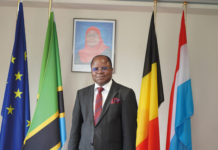Africa may be the continent of the future, but technology is the future. Undoubtedly, the advancement and development of NTIC will change and impact economies throughout the continent thoroughly. This silent revolution has been going for quite a few years.
Today, over 442 tech hubs have sprung up and are contribute to the stupendous growth of technology entrepreneurs.
The origins of Africa’s tech movement can be traced back to Kenya and its capital Nairobi.
The emergence of the Silicon Savanah starts in 2003 when M-Pesa, a mobile money transfer service was concieved in London by Nick Hughes, Head of Social Entreprises at Vodafone one of whose group partners was Kenya’s mobile phone carries, Safaricom. Four years later, Safaricom rolled out massively in Kenya and M-Pesa rapidly became very popular amongst the unbanked. Gone is the need to carry money thanks to this text message money transfer system, a major security enhancement.
More lives were changed thanks to technology during the disputed 2007-2008 presidential elections: Ushahidi which means to testify in swahili. This geo-mapping software was used to map violence and has since evolved into an open software that allow environmention issues, elections and human rights abuses to be mapped over 159 countries and 31 languages. Furthermore, BRCK was launched by Ushahidi, a device allowing rural and urban areas to be connected without counting on cable connection or electricity.
The story of Ushahidi inspires many similar experiences throughout the world and its founders create iHub in 2010. This globally recognized organization is deeply routed in the local tech innovation culture and counts over 15 000 members on a day-to day.. It has been the main catalyst for regional tech acceleration and a role model for tech hubs across emerging markets. It nurtures the best innovation and entrepreneurship ecosystem, constantly challenging and influencing technology, able to be replicated across the continent. Over 152 companies have formed out of the iHub since the launch.
In 2010, the completion of the East Africa Marine Systems undersea fibre optic cable drastically improves broadband in East Africa. The project was carried by Bitange Ndemo, Permanent Secretary in the Ministry of ICT who imagined Kenya becoming a regional ICT hub.
That same year, three women decided to change the lives of thousands of farmers by launching M-Farm at the iHub, granting real time information about market prices and where to buy and sell their supplies. President Obama travelled to Nairobi in July 2010 and called the project an inspiring hope for the country, confirming the country’s role as fast emerging global business hub. An aspiration that was confirmed through the creation in 2013 of Kenya’s own fully fledged ICT Authority. Since then, other hubs quickly emerged, such as Nailab, m:lab or other such as 88 Mph who really help entrepreneurs make their startup happen.
Konza Technology City, flagship of Kenya Vision 2030
Initiated in 2008 and in construction since 2013, the future Konza Technology City is a 14,5 billion dollars project to build a new city inteded to be an IT Business hub, popularly renamed “Africa’s Silicon Savanah”. Located on the south-east of Nairobi on the way to the city of Mombasa, the site will be a 5000 acres city and is a part of the Vision 2030 project, improving infrastructures nation wide. The entire city will take up to 20 years to build and will be located about 60km outside of Nairobi.
The city wants to attract business process outsourcing, software development, data centres, disaster recovery centres, call centres and light assembly manufacturing industries. A university campus focused on research and technology as well as hotels, residential areas, schools and hospitals will also be built. The city’s objective is to rapidly provide 20.000 IT jobs and a total of 200.000 by 2030.
![]()
Discover Konza online:
www.vimeo.com/58618218
![[:en]savanah[:]](https://perspectives-cblacp.eu/wp-content/uploads/2018/09/savanah-696x465.jpg)


